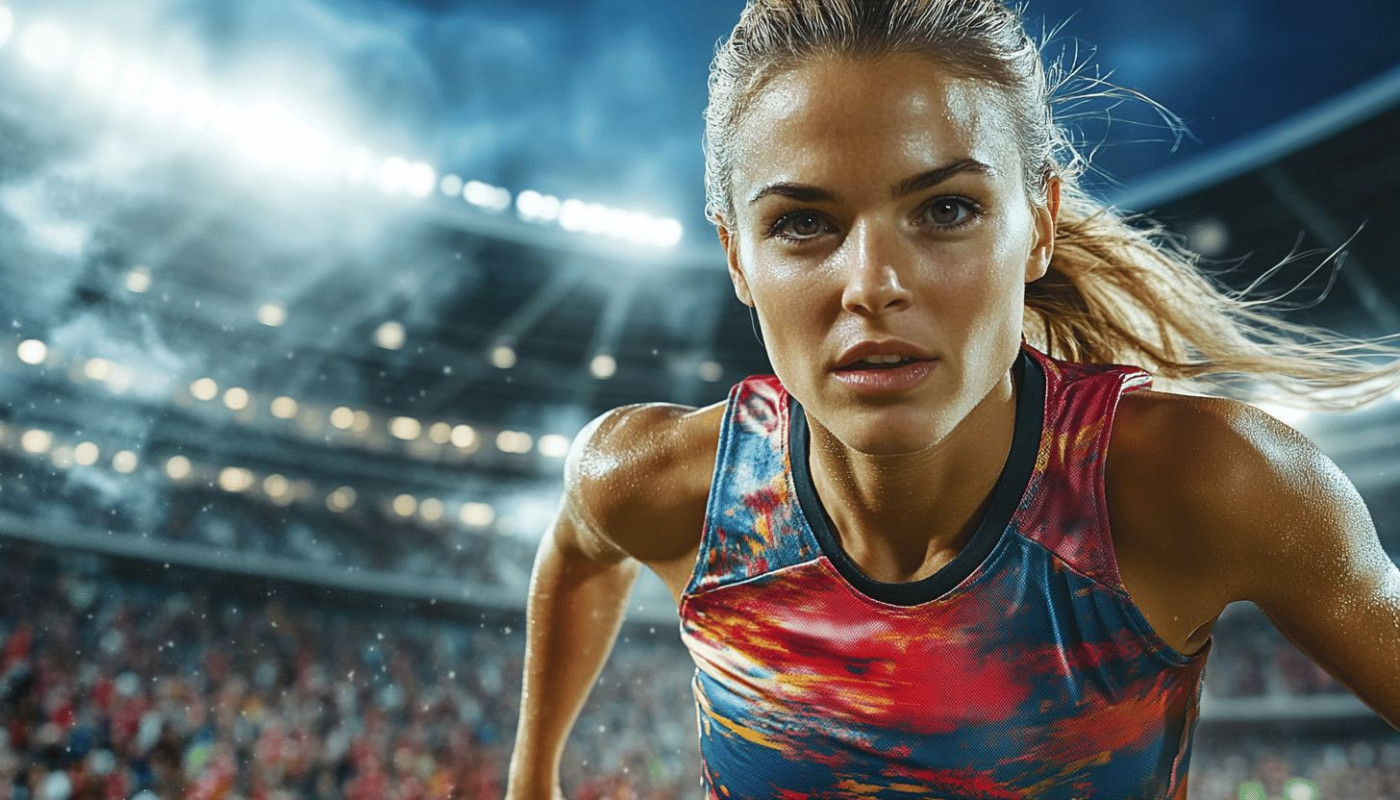Table of contents
The surge of female athletes in top-tier sports leagues is capturing global attention, reshaping the landscape of professional athletics. This phenomenon not only highlights the extraordinary talent and determination among women but also reflects significant shifts in cultural attitudes and organizational structures within the sports industry. Dive deeper to uncover the driving forces behind this transformation and learn how these developments are influencing the future of sports.
Breaking barriers and setting records
Female athletes in top-tier sports leagues are redefining the boundaries of athletic achievement, consistently breaking records across a wide spectrum of disciplines. Their performances challenge deep-seated stereotypes, with professional women demonstrating that physical prowess and competitive spirit are not exclusive to men. By shattering the glass ceiling, these athletes confront the invisible barriers that have historically limited their participation and success, making gender equality in sports a tangible goal rather than a distant aspiration. Their achievements go beyond statistics, representing a cultural shift in the way female excellence is perceived and celebrated in sporting arenas worldwide.
Participation of female athletes in major sports leagues has surged dramatically in recent years, leading to increased visibility and recognition for women’s professional leagues and events. This progress is visible in record-breaking performances, from the fastest times on the track to the highest scores in team sports. The presence of professional women at the pinnacle of their sports not only enhances competition but also attracts new generations of talent inspired by these trailblazers. Media coverage and sponsorship opportunities have also grown in parallel, underscoring a broader commitment to gender equality in sports and highlighting the market appeal of women’s athletic achievements.
The impact of breaking records extends beyond the field, serving as a catalyst for societal change. As female athletes continue to dismantle stereotypes in top-tier sports leagues, they encourage young girls to pursue ambitious goals and participate in athletics without hesitation. The visible success of professional women in overcoming the glass ceiling contributes to a culture of inclusivity, motivating institutions to reassess policies and invest in female sports development. Such advancements reaffirm that the quest for gender equality in sports benefits not only athletes but also fans, communities, and the global sporting landscape.
Impact of media representation
Media representation has become a pivotal factor in shaping the way women in sports are perceived, both by the public and potential sponsors. As media coverage expands to include a broader spectrum of female athletes in elite leagues, athlete visibility grows significantly. This amplification of women in sports not only fosters greater fan engagement but also provides young athletes with relatable role models. Yet, despite progress, media bias continues to influence the narrative—male athletes traditionally receive more comprehensive and prime-time coverage compared to their female counterparts, which can limit the exposure needed for women to achieve household-name status.
Enhanced sports coverage directly correlates with improved sponsorship opportunities for female athletes. Companies increasingly recognize the value in associating their brands with empowered, high-performing women, leading to more lucrative endorsement deals and partnerships. As the commercial viability of elite women’s sports rises, leagues and teams benefit from increased financial stability, allowing further investment in player development and league infrastructure. Media representation, therefore, acts as both a mirror and a driver: reflecting society’s evolving views while simultaneously accelerating change within the sports marketing ecosystem.
The dynamic relationship between athlete visibility and commercial support is evident in recent high-profile events and broadcasts, which draw record audiences and sponsors. Case studies involving mixed-gender coverage or comparison of league marketing efforts underline the ongoing challenges and breakthroughs within the industry. For a detailed example of how media spotlight can influence athlete narratives and league growth, click reference for coverage of a standout performance in the NBA, illustrating how targeted reporting contributes to broader sports culture recognition.
Investment driving growth
Sports investment in women’s leagues has reached unprecedented levels, laying a strong foundation for athletic development and sports growth worldwide. Organizations, from governing bodies to private enterprises, are strategically channeling women’s sports funding into state-of-the-art training facilities and advanced coaching programs. These efforts have expanded access to resources that were once reserved for male athletes, leading to a noticeable increase in participation and performance among female competitors. Government initiatives, such as targeted grants and incentivized funding schemes, have further amplified this momentum, making it possible for more women to pursue professional athletic careers and benefit from world-class training environments.
Private stakeholders, including corporate sponsors and philanthropists, recognize the significant return on investment associated with supporting female athletes and teams. Enhanced media coverage and sponsorship deals have increased visibility, generating new fan bases and commercial opportunities for women’s leagues. This influx of capital not only supports the recruitment and retention of talented athletes but also fuels innovation in coaching and sports science within women’s sports. Collectively, these investments are transforming the landscape, driving sustained sports growth and ensuring that women’s sports funding continues to be a driving force behind the surge in female participation at the highest levels of competition.
Changing league policies
League policies have undergone a marked transformation to support women’s inclusion and drive female athlete advancement in top-tier sports. Many governing bodies have implemented sports regulations designed to address gender disparities, such as adjusting salary caps, expanding roster sizes, or standardizing resource allocation for women’s teams. These measures, often inspired by the principles of affirmative action, aim to counteract historic inequalities by ensuring women receive equitable opportunities for training and competition. In some cases, leagues have revised eligibility rules or established minimum participation quotas, directly increasing the visibility and presence of women in professional sports environments.
Diversity in sports is also being promoted through a wave of new competitions and targeted diversity initiatives. International and domestic leagues are introducing women-specific tournaments and mixed-gender events, providing a wider stage for female athletes to demonstrate their abilities. Strategic partnerships with sponsors and broadcasters are enhancing media coverage, further amplifying the role of women in high-profile sports. By embedding these changes within the framework of league policies, major organizations are not only fostering women’s inclusion but also setting a precedent for gender balance across the industry, signaling a progressive shift in how female talent is nurtured and celebrated.
Societal influence and future trends
Societal influence has dramatically altered the landscape for female professional athletes, with evolving attitudes about gender roles in sports playing a pivotal role. Historically, the social construct of athleticism positioned men as the default standard in top-tier leagues, marginalizing women through entrenched biases and limited opportunities. Over the past decade, growing advocacy for women has challenged these perceptions, with organizations and grassroots movements amplifying female representation both on the field and in executive roles. This surge in support has contributed to the normalization of women as professional athletes, inspiring a new generation to pursue competitive sports at the highest levels.
Future sports trends suggest a continued rise in the prominence and influence of female athletes in elite leagues. As media coverage diversifies and sponsorship deals become more inclusive, the visibility of women in sports is set to expand further. Advocacy groups are expected to remain at the forefront, pushing for equitable treatment, pay parity, and improved access to training facilities. The dismantling of outdated social constructs around gender roles in sports will likely accelerate, encouraging leagues to develop policies that foster diversity and inclusivity. These changes are anticipated to create a broader talent pipeline and a richer, more competitive environment across all professional sports.
Examining these shifts through the lens of a distinguished sports sociologist reveals that societal influence extends beyond the playing field, shaping policy decisions, media narratives, and public expectations. The future for women in professional sports appears increasingly promising, underpinned by persistent advocacy for women and the transformation of traditional norms. As the social construct of gender in athletics continues to evolve, the integration of female athletes into top-tier sports leagues will become an enduring feature of the global sports industry, offering lasting benefits for athletes, fans, and institutions alike.
Similar



